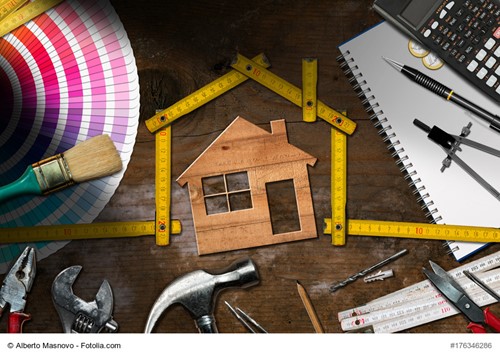How to Create a Helpful Budget and Timeline for Your Home Improvement Project
 Home improvements are a vital part to keeping your home up-to-date with the times and also to ensure that it doesn’t lose value when it comes time to sell.
Home improvements are a vital part to keeping your home up-to-date with the times and also to ensure that it doesn’t lose value when it comes time to sell.
To save money, many homeowners take the do-it-yourself route and use the tools at their disposal to upgrade their homes. Sites like YouTube have made it easier than ever to follow step-by-step tutorials that show you how to make substantial repairs and upgrades to your home without having to pay a professional.
The down side, however, is that when you choose to DIY, you take on the risk of going over budget by making mistakes. You also risk stretching out your project weeks or months longer than necessary due to a lack of time to work on it.
In today’s post, we’re going to talk about how you can stay on budget and on track to finish your home improvement project without bringing in the professionals.
Making a timeline
Let’s start with the big picture for your home renovations. When deciding which improvements to make, it’s important to know your limits in terms of the work you can do.
Set a reasonable number of hours you can work on your projects per week. Go easy on yourself. Most of us are already tired when we get home from work and probably won’t be able to start tackling big projects in the evenings. Rather, try to give yourself one weekend day to work on your projects and one weekend day to relax.
The most important aspect of creating your timeline is to try and keep your schedule open. So, write down the time you want to work on your home in your calendar, planner, or whichever app or tool you use to plan your time.
This will help you to avoid creating conflicting events and obligations, and help you stay on track to finishing your improvement projects.
If you’re looking for an evening activity related to your home improvement projects, it’s a good idea to start watching some video tutorials of people doing the same renovations as you. This will help you avoid mistakes and look out for common obstacles that you’ll face along the way.
Budgeting your improvement
You’ll want to save up for your project in advance, if possible, to avoid accumulating credit card debt. Your home improvement project should, in effect, gain you money by increasing the value of your home, not make you lose money on credit card interest payments.
Budgeting in itself is an art that few of us are taught in school. Fortunately, there are several free budgeting apps available. Or, you can simply draw one up yourself.
The key to creating a home improvement budget is to know how much of your monthly savings you can devote to this project without having to dip into other funds. To do this, you’ll need a clear understanding of where your income goes.
Once you have a budget and a timeline for your home improvement project, you’re ready to begin. Just make sure you check in on your timeline and your budget throughout the length of the project to make sure you’re meeting your goals and aren’t overspending.
